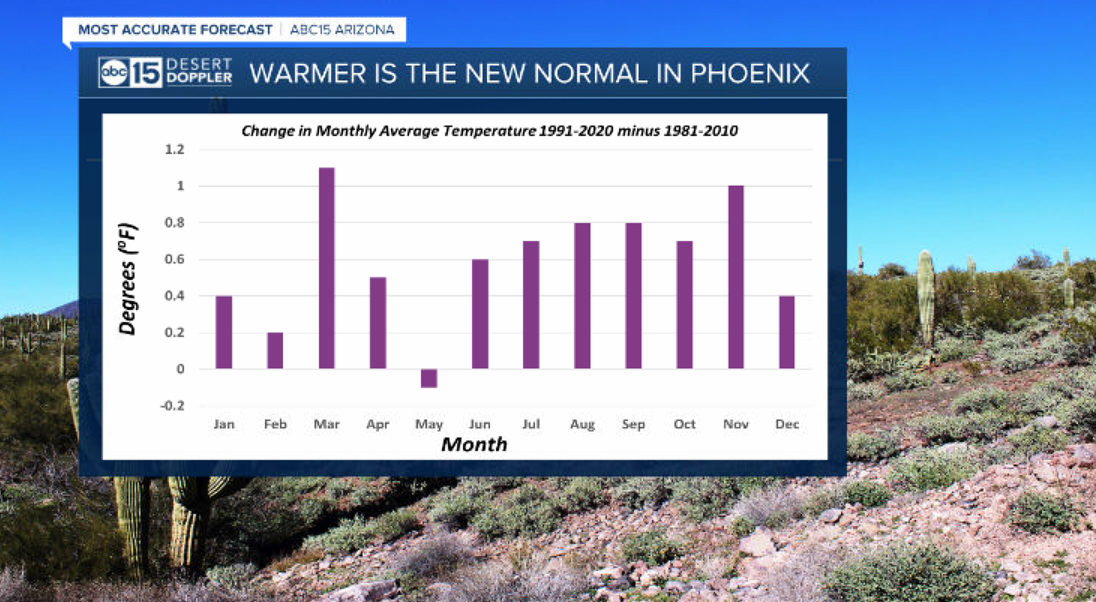PHOENIX — Hotter and drier weather is now officially the new normal for Phoenix.
The National Oceanic and Atmospheric Administration just released new climate normals which give us a 30-year average baseline to which we can compare our daily weather.
This important information is used for decision-making on a wide range of things in our society, such as economic forecasts, what crops to plant and when, construction project planning, and electricity demand.
These normals are updated every ten years and the new numbers now average our temperatures and precipitation from 1991 to 2020.
Here in Phoenix, annual temperatures have trended up and annual precipitation has trended down over the last 30-year period.

Phoenix has seen about a 10% percent reduction in annual rainfall -- a significant decrease here in a desert that doesn't see much rain anyway.
Nearly every month had a reduction in average precipitation. The biggest changes were seen in March, July and December.

The big reduction in summer precipitation also means that the normal amount of rainfall during a monsoon season has decreased. We are now down to an average of just 2.43 inches of rain during the month of June, July, August and September.

Average temperatures trended up overall, but the biggest increases were seen in our overnight lows.



Overnight lows are increasing faster than daytime highs due to the urban heat island effect. Our buildings, sidewalks, and streets release heat much slower than our open deserts once the sun sets, and that results in warmer overnight temperatures in the city.
Phoenix's warmest average overnight temperature is now up to 85 degrees in the summer. That is a 3-degree increase from the 1971-2000 period.

As temperatures increase so does evaporation and that reinforces our drought.
Hotter and drier conditions also lead to more wildfires.
It's that trifecta of climate threats (heat, drought, and wildfires) that Arizonans are already dealing with and that could continue to get worse in the decades ahead as our planet continues to warm.

The U.S. normal annual temperature is now 53.3 degrees Fahrenheit based on data from 1991 to 2020. Normal was 52.3 degrees just 20 years earlier.







